
Curve DAO
CRV Price
How is the price of Curve DAO (CRV) calculated?
The price of Curve DAO (CRV) is calculated in real-time by aggregating the latest data across 120 exchanges and 196 markets, using a global volume-weighted average formula. Learn more about how crypto prices are calculated on CoinGecko.
Curve DAO Price Chart (CRV)
| 1h | 24h | 7d | 14d | 30d | 1y |
|---|---|---|---|---|---|
| 0.1% | 0.4% | 10.2% | 25.9% | 30.2% | 51.0% |
CRV Converter
|
Market Cap
Market Cap = Current Price x Circulating Supply
Refers to the total market value of a cryptocurrency’s circulating supply. It is similar to the stock market’s measurement of multiplying price per share by shares readily available in the market (not held & locked by insiders, governments) Read More |
$553,677,756 |
|---|---|
|
Market Cap / FDV
The proportion of current market capitalization compares to market capitalization when meeting max supply.
The closer the Mkt Cap/FDV to 1, the closer the current market capitalization to its fully diluted valuation and vice versa. Learn more about Mkt Cap/FDV here. |
0.57 |
|
Market Cap / TVL Ratio
Ratio of market capitalization over total value locked of this asset. A ratio of more than 1.0 refers to its market cap being greater than its total value locked.
MC/TVL is used to approximate a protocol’s market value vs. the amount in assets it has staked/locked. |
0.28 |
|
Fully Diluted Valuation
Fully Diluted Valuation (FDV) = Current Price x Total Supply
Fully Diluted Valuation (FDV) is the theoretical market capitalization of a coin if the entirety of its supply is in circulation, based on its current market price. The FDV value is theoretical as increasing the circulating supply of a coin may impact its market price. Also depending on the tokenomics, emission schedule or lock-up period of a coin's supply, it may take a significant time before its entire supply is released into circulation. Learn more about FDV here. |
$978,879,738 |
|
Fully Diluted Valuation / TVL Ratio
Ratio of fully diluted valuation (FDV) over total value locked (TVL) of this asset. A ratio of more than 1.0 means that the FDV is greater than its TVL.
FDV/TVL is used to approximate a protocol’s fully diluted market value vs. the amount in assets it has staked/locked. |
0.49 |
|
24 Hour Trading Vol
A measure of a cryptocurrency trading volume across all tracked platforms in the last 24 hours. This is tracked on a rolling 24-hour basis with no open/closing times.
Read More |
$43,341,161 |
|
Total Value Locked (TVL)
Capital deposited into the platform in the form of loan collateral or liquidity trading pool.
Data provided by Defi Llama |
$1,990,642,441 |
|
Circulating Supply
The amount of coins that are circulating in the market and are tradeable by the public. It is comparable to looking at shares readily available in the market (not held & locked by insiders, governments).
Read More |
1,192,032,535
|
|
Total Supply
The amount of coins that have already been created, minus any coins that have been burned (removed from circulation). It is comparable to outstanding shares in the stock market.
Total Supply = Onchain supply - burned tokens |
2,107,465,008 |
|
Max Supply
The maximum number of coins coded to exist in the lifetime of the cryptocurrency. It is comparable to the maximum number of issuable shares in the stock market.
Max Supply = Theoretical maximum as coded |
3,303,030,299 |
CRV Historical Price
| 24h Range | $0.4576 – $0.4721 |
|---|---|
| 7d Range | $0.4106 – $0.4724 |
| All-Time High |
$15.37
97.0%
Aug 14, 2020 (over 3 years)
|
| All-Time Low |
$0.3316
40.1%
Nov 05, 2020 (over 3 years)
|
How do you feel about CRV today?
Recently happened to Curve DAO
What is CRV?
CRV is the governance token for Curve Finance. It implemented a complex time-based staking system to exchange CRV into veCRV, where veCRV is an internal token intended for governance purposes and has a right to claim the cash flows generated by the protocol.
1 CRV locked for 4 years = 1veCRV
1 CRV locked for 3 years = 0.75veCRV
1 CRV locked for 2 years = 0.50veCRV
1 CRV locked for 1 year = 0.25veCRV
Curve Finance conducted one of the biggest retroactive token airdrops on 14 August 2020 to reward early users, with a vesting period up to 4 years. It intends to have yield farming for all of its pool, with the reward weightage voted by the veCRV holders.
Yield Farming refers to the activity of depositing and locking capital in a DeFi Protocol for the reward of the protocol’s native tokens. DeFi protocols need to bootstrap capital to provide liquidity for exchanges, lend to borrowers, underwrite insurance risk, etc. It acts as an incentive to attract users to use the protocol while generating hype, giving out part of its native tokens.
Yield farmers will have to constantly monitor their veCRV power to get the maximum payout from the yield farming exercise as veCRV decays with time. There is a calculator built that shows this in detail. For further information do refer to the official documentation.
What is Curve Finance?
Similar to Uniswap, Curve Finance is an Automated Market Maker (AMM) based Decentralised Exchange (DEX). Unlike Uniswap, Curve focuses on allowing users to swap between assets that have very similar underlying value at the lowest slippage. This is useful in the DeFi ecosystem as there are plenty of wrapped tokens and synthetic tokens that aim to mimic the price of the real underlying asset.
For example, one of the biggest pools is 3CRV, which is a stablecoin pool consisting of DAI, USDT, and USDC. Their ratio in the pool will be based on the supply and demand of the market. Depositing a coin with a lesser ratio will yield the user a higher percentage of the pool. As such, when the ratio is heavily tilted to one of the coins, it may serve as a good chance for arbitrage.
Curve Finance also supports yield-bearing tokens. For example, it collaborated with Yearn Finance to release yUSD pools that consisted of yDAI, yUSDT, yUSDC and yTUSD. Users that participated in this pool will not only have yield from the underlying yield-bearing tokens, but also the swap fees generated by the Curve pool. Including the yield farming rewards in terms of CRV tokens, liquidity providers of the pool actually have three sources of yield.
What is metapool?
To promote the liquidity of more obscure tokens, Curve introduced the concept of base and meta pools. Metapools allow for one token to seemingly trade with another underlying base pool. This means we could create for example the following pool: [GUSD, [3CRV]].
In this example users could seamlessly trade GUSD between the three coins in the 3CRV (DAI/USDC/USDT). This is helpful in multiple ways:
-
Prevents diluting existing pools
-
Allows Curve to list less liquid assets
-
More volume and more trading fees for the DAO
The Metapool in question would take GUSD and 3CRV LP tokens. This means that liquidity providers of the 3CRV pool who do not provide liquidity in the GUSD Metapool are shielded from systemic risks from the Metapool.
The similar base pool for BTC is sBTC Curve, consisting of wBTC, renBTC and sBTC.
What is the pool factory?
In collaboration with Yearn Finance, Curve has developed a pool factory, a way for anyone to deploy a Curve Metapool with the 3CRV or sBTC Pool.
Before this, only the Curve DAO can deploy a new pool. Now, anyone can deploy a pool for stable or algo coins as well as a tokenized Bitcoin in a few clicks.
There are a few parameters to be set:
-
Swap Fee (0.04% - 1.00%)
-
Amplification (A) Parameter (volatile algo coins need an A parameter around 5-10, for more information please refer to https://www.curve.fi/stableswap-paper.pdf)
Pools created through pool factory has a few characteristics:
-
It is not possible to destroy the Curve pools once deployed.
-
Assets listed are not vetted by the Curve DAO, so users need to do their own research when trading those assets. This includes verifying the token addresses.
-
The only admin change that can be made by the Curve DAO is ramping the A (amplification) parameter
-
Tokens with more than 18 decimals are not supported
-
Initial liquidity have to be seeded by the deployer
Other than USD and BTC, are other assets supported?
Curve Finance just launched the ETH and EUR pools, with support for more assets in the development pipeline.
ETH: sETH[ ETH, sETH], and stETH [ETH, stETH].
What are the benefits of providing liquidity to Curve pools?
As an example, let's look at stETH pool that provides four sources of yield.
This can be viewed at the main page of Curve Finance. Looking at the Annual Percentage Yield (APY) figures, it shows that the Liquidity Providers (LPs) can roughly expect
-
3.33% APY from trading fees
-
7.40% APY from LDO token rewards
-
0.15% to 0.37% CRV token rewards (based on amount of veCRV locked).
-
What is not shown here is the staking yield available for stETH.
As of January 2021, the total yield would be in the range of 49%-57% APY. The exact APY hinges on the weekly gauge weight votes, veCRV boost, and the LDO rewards that are expected to only last for 1 month starting from 13 Jan 2021.
The LDO and CRV tokens will have to be manually claimed and sold to ETH if the users only want to increase their ETH holdings, as such, it is simpler to use yield farming aggregators such as Yearn Finance that can do that automatically.
How to provide liquidity to Curve pools?
Using the same example as above, after clicking the pool and going to the deposit tab, users are able to see the information about the selected pool.
As shown, the ratio of the pool is now ETH (44.96%) and stETH(55.04%). Therefore, depositing ETH will yield a bonus pricing of 0.2%.
If users want to avoid any bonus or slippage in pricing, choose the ‘Add all coins in a balanced proportion’ option.
Stake in gauge basically means staking to earn the yield farming rewards of CRV tokens.
What is gauge weight?
Gauge weight refers to the daily CRV rewards a pool receives. The following graph can be found at the “Gauge weight vote” tab under the Curve DAO.
From the graph we can see that the stETH pool is only expected to have 1.37% of the daily CRV rewards. The weights shown above are the voting result by the veCRV holders conducted every week.
How to maximise the APY through vote locking veCRV?
Using the same stETH vault above, let's look at how to maximise the CRV rewards from the yield farming activity. A certain amount of veCRV is required to boost the CRV rewards up to max 2.5x. Below is the interface of the calculator.
From the picture above it can be seen that locking 1000 CRV for two years will yield 500 veCRV and is expected to have a 1.99x boost on 1 ETH worth of assets in the stETH pool. If users already have assets in the pool, click the “Use existing deposit” option.
To achieve the maximum boost of 2.5x, users will need 760.84 veCRV. Users can lock 1,521.68 CRV for two years to achieve this.
The voting power applies to all pools the users have but may produce different boosts based on how much liquidity users are providing and how much total liquidity the pool has. veCRV decreases over time but the boost will only be updated at certain checkpoints like withdrawing, depositing into a pool, or claiming CRV rewards. Constant monitoring is required to maintain max boost.
What are the fees to use Curve Finance?
Most swaps on Curve cost 0.04% in fees. 50% of the fees go to veCRV holders and 50% of the fees go to Liquidity Providers (LPs). Pools that are launched through the pool factory can support up to 1% in fees. For up to date information, go to the deposit page of the selected pool like shown above where the total fee and admin fee (fees earned by veCRV holders) are shown.
Where can you buy Curve DAO?
CRV tokens can be traded on centralized crypto exchanges. The most popular exchange to buy and trade Curve DAO is Bitunix, where the most active trading pair CRV/USDT has a trading volume of $149,832.57 in the last 24 hours. Other popular options include Binance and MEXC.
What is the daily trading volume of Curve DAO (CRV)?
The trading volume of Curve DAO (CRV) is $43,341,161.05 in the last 24 hours, representing a -17.80% decrease from one day ago and signalling a recent fall in market activity.
What is the all-time high for Curve DAO (CRV)?
The highest price paid for Curve DAO (CRV) is BTC0.001303, which was recorded on Aug 14, 2020 (over 3 years). Comparatively, the current price is -97.00% lower than the all-time high price.
What is the all-time low for Curve DAO (CRV)?
The lowest price paid for Curve DAO (CRV) is BTC0.055961, which was recorded on Nov 05, 2020 (over 3 years). Comparatively, the current price is 40.10% higher than the all-time low price.
What is the market cap of Curve DAO (CRV)?
Market capitalization of Curve DAO (CRV) is BTC8,310.9097 and is ranked #159 on CoinGecko today. Market cap is measured by multiplying token price with the circulating supply of CRV tokens (1.2 Billion tokens are tradable on the market today).
What is the fully diluted valuation of Curve DAO (CRV)?
The fully diluted valuation (FDV) of Curve DAO (CRV) is BTC14,693.3501. This is a statistical representation of the maximum market cap, assuming the maximum number of 3.3 Billion CRV tokens are in circulation today. Depending on how the emission schedule of CRV tokens are designed, it might take multiple years before FDV is realized.
How does the price performance of Curve DAO compare against its peers?
With a price increase of 10.20% in the last 7 days, Curve DAO (CRV) is outperforming the global cryptocurrency market which is up 6.40%, while outperforming when compared to similar Polygon Ecosystem cryptocurrencies which are up 0.00%.
How to add Curve DAO (CRV) to MetaMask?
Adding Curve DAO (CRV) to MetaMask allows you to view your token holdings, trade on decentralized exchanges, and more. To add them, you’ll need to import CRV as a token. You can copy CRV’s contract address (0xd533a949740bb3306d119cc777fa900ba034cd52) and import it manually, or if you've installed MetaMask's chrome extension, add CRV to MetaMask with one click on CoinGecko.
Add CRV to MetaMask.

Curve DAO Markets
| # | Exchange | Pair | Price | Spread | +2% Depth | -2% Depth | 24h Volume | Volume % | Last Updated | Trust Score | |
|---|---|---|---|---|---|---|---|---|---|---|---|
| 1 |
CEX
|
$0.46523813902222900000000000000000000000000 | 0.02% | $455,839 | $285,587 | $149,832 | 0.35% |
Recently
|
|||
| 2 |
CEX
|
$0.46509076626959610000000000000000000000000 | 0.02% | $243,868 | $305,777 | $7,021,937 | 16.2% |
Recently
|
|||
| 3 |
CEX
|
$0.4643820932231836300000000000000000000 | 0.02% | $205,251 | $232,335 | $174,751 | 0.4% |
Recently
|
|||
| 4 |
CEX
|
$0.464890813231647050000000000000000000000 | 0.04% | $359,591 | $458,015 | $842,731 | 1.94% |
Recently
|
|||
| 5 |
CEX
|
$0.46399102456087610000000000000000000000000 | 0.02% | $190,586 | $177,657 | $22,686.00 | 0.05% |
Recently
|
|||
| 6 |
CEX
|
$0.46488963820581090000000000000000000000000 | 0.02% | $162,371 | $62,903 | $342,184 | 0.79% |
Recently
|
|||
| 7 |
CEX
|
$0.46398927092716830000000000000000000000000 | 0.11% | $571,106 | $534,979 | $127,541 | 0.29% |
Recently
|
|||
| 8 |
CEX
|
$0.46498967901454896000000000000000000000000 | 0.06% | $221,687 | $220,732 | $570,315 | 1.32% |
Recently
|
|||
| 9 |
CEX
|
$0.46390706247431557000000000000000000000000 | 0.04% | $131,930 | $158,257 | $541,104 | 1.25% |
Recently
|
|||
| 10 |
CEX
|
$0.46499078975062160000000000000000000000000 | 0.06% | $188,100 | $235,735 | $271,517 | 0.63% |
Recently
|
|||
Curve DAO Latest News
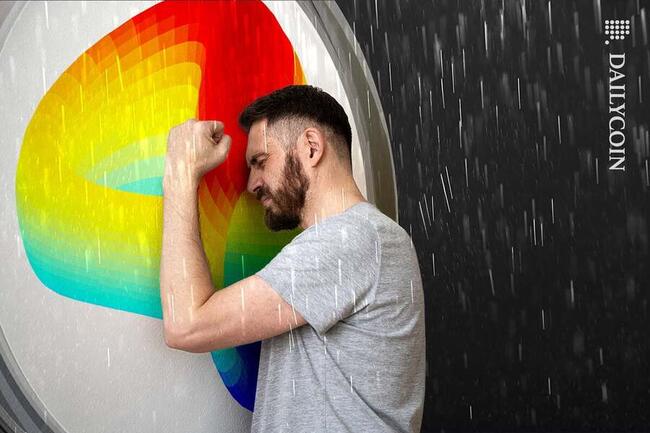



Curve DAO Guides
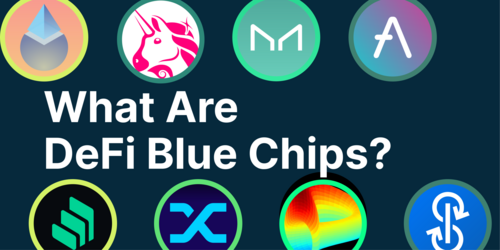
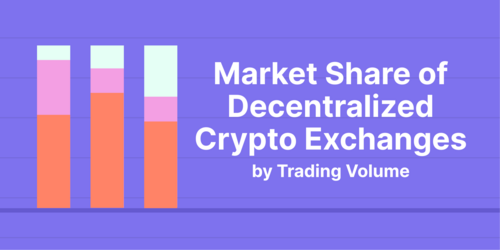
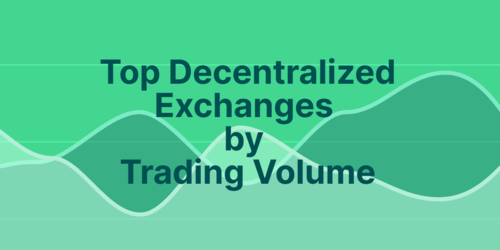
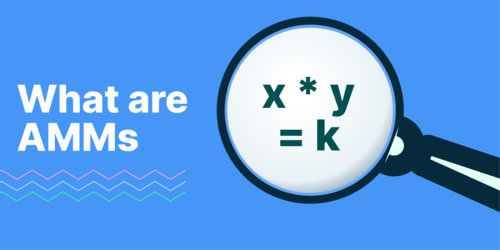






































 Or check it out in the app stores
Or check it out in the app stores



